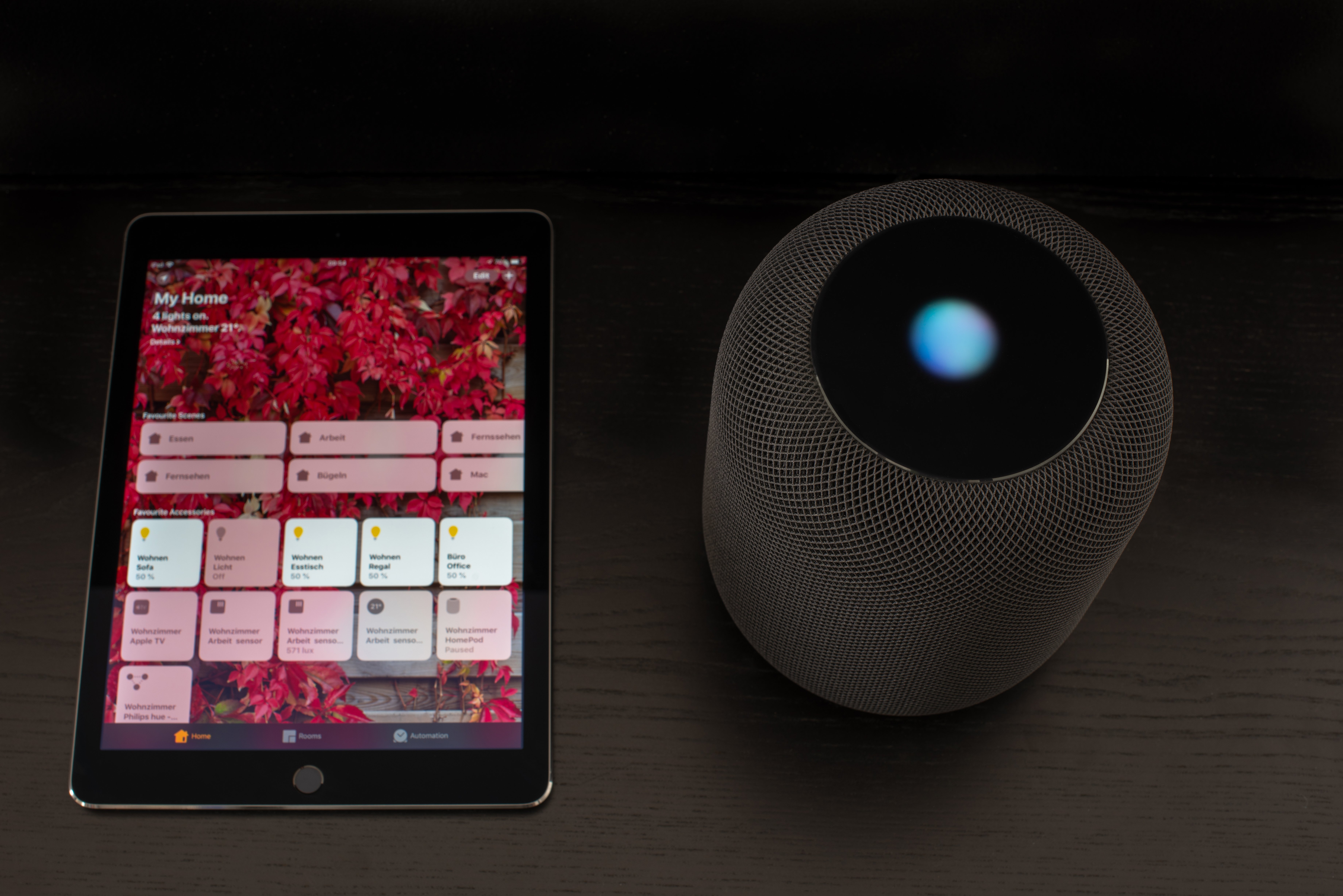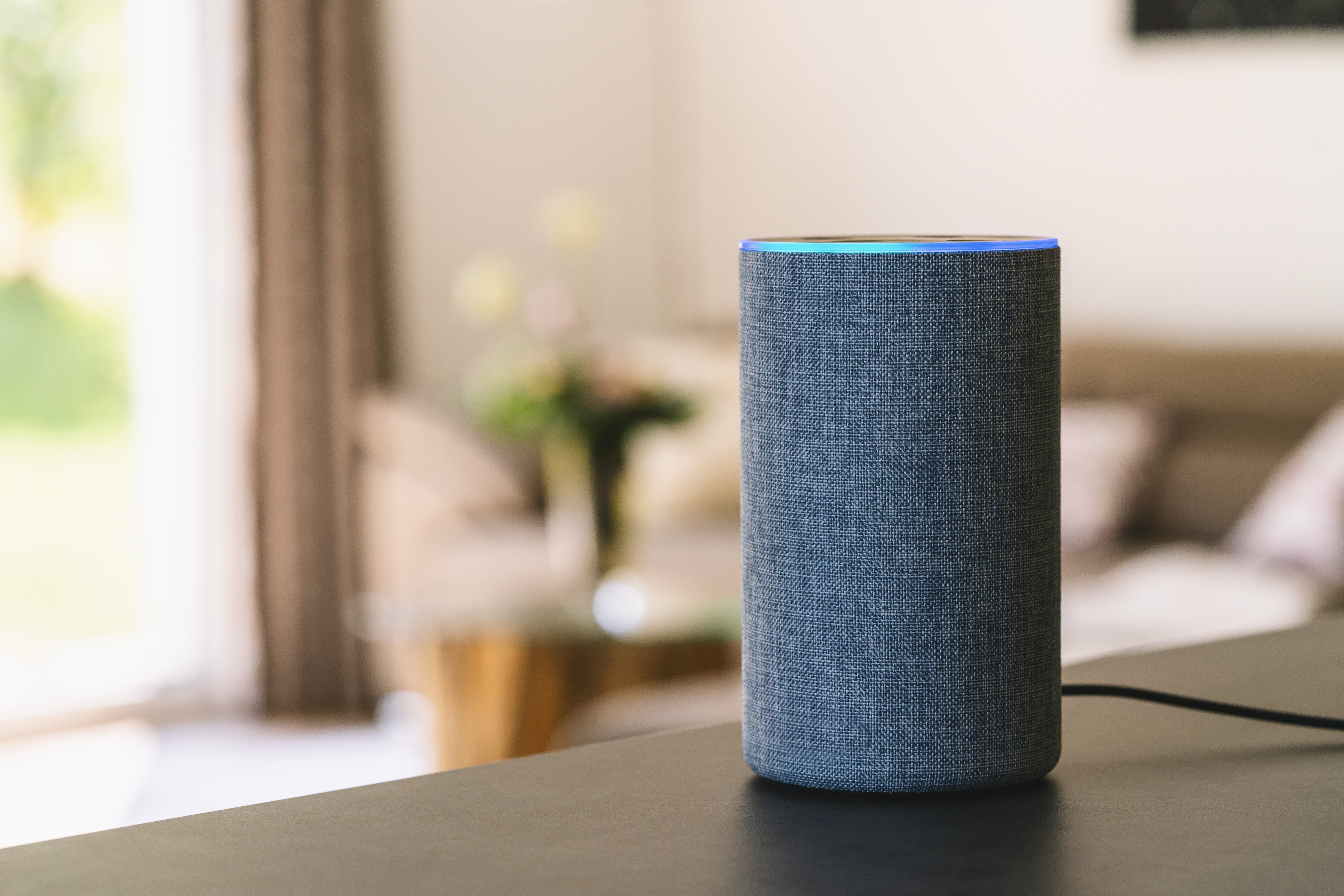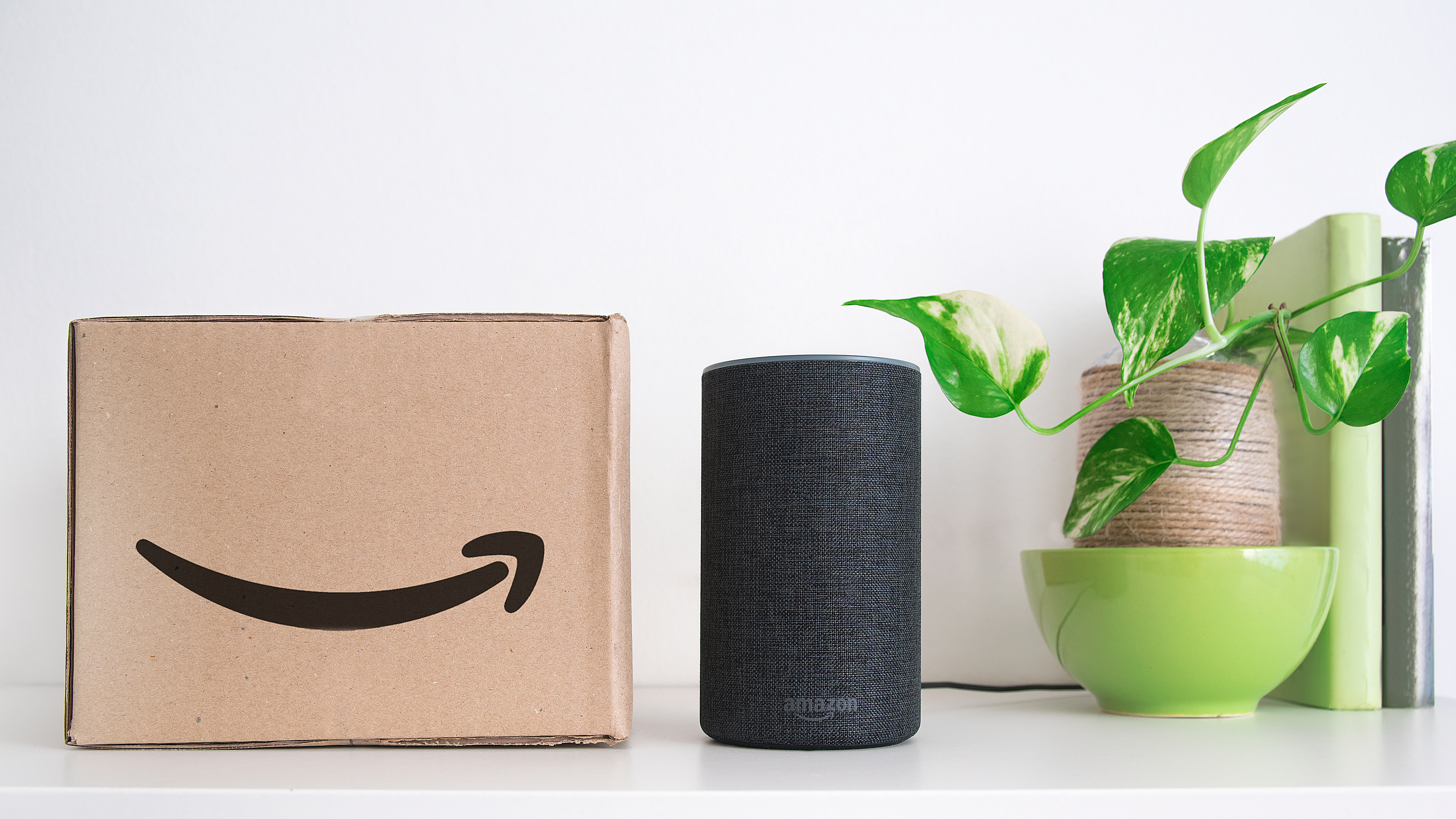My man and I reached new levels of yuppy recently, gifting each other a smart home for Christmas, complete with Apple TV, two HomePod Minis, and a whole host of smart devices like lightbulbs, plugs, and door locks. Now, when we walk into the house, the lights turn on, when we tell Siri it’s bedtime, the lights turn off, and when we tell her it’s feeling dry, the humidifier resumes its steady vapor cloud. Sure, it’s all very cool and convenient, though I will confide I occasionally find myself in an embarrassingly protracted argument with a speaker (“Hey Siri! Stop talking, OMG, let me finish a sentence!”) and that I have come to feel like an early version of the human population in WALL-E.
Yet, while the smart home system is a boon to consumer electronic and home goods manufacturers (Apple and Philips just made a killing off of us), it also portends another, far more significant economic driver, voice-assisted shopping (v-commerce).
While voice search and shopping did not catch on as quickly as some (Amazon) had hoped, there is every reason to believe that, as more and more consumers go full yuppy and integrate smart home technology, this technology will push consumers to more readily and fully adopt voice-based shopping. To be clear, smart homes are not required for voice shopping—anybody with a phone can use a virtual assistant to do that—but their integration, through function and convenience, induces consumers to familiarize themselves with v-commerce.
So, we are putting in the retail and manufacturing market research to breakdown the emerging smart home market before turning to voice-search and shopping. How will v-commerce reshape retail, particularly e-commerce, how can sellers help their products climb up smart search rankings, and how is Amazon using voice search rankings as both a carrot and a stick? Don’t ask Alexa, ask TrendSource!
Smart Homes for Dummies

As we discovered in our previous market research blog about smart homes and v-commerce, it is somewhat cumbersome to break down the different components that go into a smart home.
Let’s use Amazon’s system as an example. In v-commerce, there are three components, the hardware, the software, and the retail platform. Amazon manufacturers multiple variations of a smart speaker, the Echo. This speaker utilizes Amazon assistant technology, Alexa, to understand and execute voice commands. And when it comes to voice shopping, Alexa utilizes the Amazon marketplace to fulfill requests.
Again, three components: The hardware speaker, the software assistant, and the retail platform. Make sense? Good!
When it comes to the hardware and assistant software, there really are only three players (despite the fact that Samsung’s SmartThings is regularly voted the most efficient and user-friendly): Amazon, Google, and Apple. Sorry Microsoft, Cortana never caught on. And while there are blogs upon blogs to be written about the war to occupy your nightstand, today we are going to focus on voice shopping.
People do not buy smart home products because they can’t wait to start shopping using voice commands, they buy them for the aforementioned yuppy purposes. And yet, smart speakers like the Amazon Echo and the Apple HomePod have been shown time and time again to drive voice search adoption. This makes sense: If you buy a new toy, you want to use it. And we all know that voice searching (“Alexa, what is the name of Jay-Z’s cognac?”) is only one step away from voice shopping (“Alexa, order me some D’Usse!”).

The Rise of V-Commerce, which is Like E-Commerce but Louder
Currently, surveys and studies suggest that roughly 40% of people who own smart speakers have used them at least once for shopping and, barring some massive nation-wide outbreak of laryngitis, this number will only increase.
In 2018, only 5% of consumers used voice shopping. By 2022, that number is expected to cross 50%, when v-commerce will account for $40 billion in yearly spending. That’s a lot of growth, and while increased voice search does not necessarily translate into increased spending—people are using different means to buy the same things—the change demands manufacturers and retailers reassess how they sell their products.
Obvious point first: Voice search, when accurate, is way faster than traditional keyboard-based searches. Like, nearly four times faster. And, even more obviously, when not attached to a display, voice search results are entirely auditory. This means that, with few exceptions, voice shopping is not about a browsing experience but rather an efficient path to a predetermined purchase. You use voice to re-up on your favorite liquid hand soap; you use traditional search to seek out the perfect adorably modern and whimsy soap dispensers that just so happen to go with the décor in both bathrooms.
In such a system, incumbent brands stand to win. Indeed, in all three smart home systems, the virtual assistant learns an individual’s shopping patterns and begins to tailor results and purchases to that history. So, when you holler for Alexa to add chamomile tea to your shopping cart, she already knows that you like the 100-bag, organic variety. Great news for brand loyalty, terrible news for exploration.

Furthermore, voice search returns only the top-three search results, so competition for higher Search Engine Optimization (SEO) rankings is all-the-more intense when it’s not about being on the first page of Google (top-ten) but rather in the top-three of voice search.
Vendors must put in significant online market research to understand how their products appear (if at all) in voice searches and plot paths forward.
Some of this has already played out among the titans of retail. Indeed, the voice shopping market, and particularly Amazon’s dominance within it, has led to some interesting bedfellows. As we previously described, Walmart, understanding that Amazon’s forthcoming v-commerce dominance is a problem for its retail competitors, integrated Google Assistant into its app, meaning that consumers could voice shop Walmart using their Google devices. Soon thereafter, it added Apple’s Siri.
Of course, this path is not open to most manufacturers and sellers, meaning they must find ways to ensure Amazon helps punch their ticket to the future of v-commerce.
That means navigating Alexa.
Market Research and Alexa’s A-List: How to Appear in Alexa Voice Searches
While there is competition among smart home and virtual assistant systems, when it comes to voice shopping, it really is Amazon and everybody else. This makes sense. Think about each smart home manufacturers’ endgame. Apple wants its smart home products to drive consumers further into its closed hardware ecosystem; Google wants to collect data about consumers to sell to advertisers; Amazon wants to drive consumers to its marketplace. As such, while Apple’s system is by far the ‘coolest’ and most streamlined, and Google’s is the most accurate and widely integrated, Amazon’s is by far the most efficient for voice shopping because it connects directly to Amazon’s marketplace.
Therefore, it greatly behooves sellers to undertake the market research necessary to appear in Amazon’s voice search results, and we will dedicate the rest of the blog to shining some light on this largely obscure process. This is the type of information market research methodologies can deliver to companies in the discovery stages of a program; implementing them, of course, will require an expert.
The problem with voice search, as any Amazon seller will tell you, is that there is a good deal of mystery surrounding how, exactly, Amazon’s Alexa determines which products will appear in its results.

One thing is clear: Products selected as “Amazon’s Choice” are far likelier to appear. Amazon’s Choice is a distinction within the Amazon marketplace signaling products they endorse as high quality, fairly priced, and quick to deliver.
But sellers cannot enroll into this program or even volunteer to be considered. In an Amazon Seller Forum, the company provided some information on the process, noting that “selections are constantly updated, so continuing to offer high quality, well-priced products to your buyers will give you the best change to be selected as Amazon’s Choice.”
According to some third parties, Amazon considers a whole host of factors in determining Amazon’s Choice, including: quality, ratings and reviews, popularity, availability, shipping speed, and price. Sounds like pretty much everything, right? That’s kinda the point.
For Amazon, the program is a valuable tool to drive consumer loyalty—Amazon essentially endorses these products, helping customers navigate their seemingly infinite marketplace.
But Amazon also uses the program to discipline its sellers. By competing to be in a highly valuable, but vaguely defined, program that can catapult them to the top of traditional and voice search alike, sellers are encouraged to provide products and price points that will keep Amazon’s shoppers happy.

Yet, since all Amazon’s Choice products are Prime-eligible, and all Prime-eligible products must be Fulfilled By Amazon (FBA), sellers looking to appear in voice search must move their products directly to Amazon’s warehouses, which increases turnaround time and efficiency, while also allowing Amazon tighter control over its logistics.
Amazon knows v-commerce is going to be a big thing very soon and its message to sellers, while opaque, is also clear: Anybody following Amazon into the future had better march to their beat.
And the only way to ensure you are on that beat is with market research.
Old joke: What’s the best place to bury a body? On the second page of google search results. Today, the SEO stakes are even higher. Voice search is coming and manufacturers must figure out how to be a part of it. And that’s the kind of problem Alexa cannot help you with.


